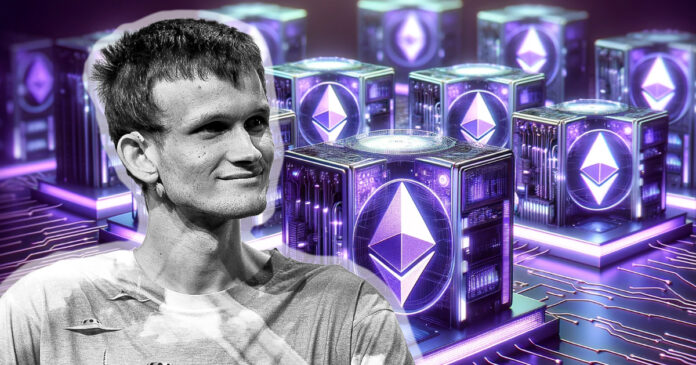Ethereum co-founder Vitalik Buterin introduced a new concept for the blockchain platform called an “enshrined Zero-Knowledge Ethereum Virtual Machine (ZK-EVM) in a Dec. 13 blog post.
The main goal of the proposal is to substantially improve the efficiency and security of Ethereum’s Layer-2 protocols, which include optimistic and ZK rollups.
Addressing challenges in Layer-2 protocols
Buterin’s proposal arises from a need to streamline the current Layer-2 solutions on Ethereum. These protocols, vital for Ethereum’s scalability, depend heavily on EVM verification, which currently involves relying on a large, potentially vulnerable codebase.
Additionally, ZK-EVMs, designed to mimic the Layer-1 EVM, face the challenge of keeping up with changes in the main Ethereum protocol, leading to redundant efforts and increased risk of security flaws.
The solution proposed by Buterin involves embedding a ZK-EVM directly within the Ethereum network. This internal ZK-EVM would undertake the task of verifying Layer-1 Ethereum blocks, thereby offering a more efficient and secure approach.
As Ethereum advances, particularly with the development of light clients using ZK-SNARKs, the concept of a native ZK-EVM becomes increasingly practical and appealing.
Core aspects of the proposed ZK-EVM
Buterin envisions the ZK-EVM to focus mainly on verifying Ethereum blocks by processing inputs like a pre-state root, a block, and a post-state root.
This would ensure the integrity of the post-state root as a true outcome of block execution. The proposal also aligns with Ethereum’s multi-client philosophy, supporting the use of diverse proving systems and emphasizing the importance of data availability and auditability.
Implementing a ZK-EVM, as described by Buterin, presents several design challenges and trade-offs. Essential properties include:
- Compatibility and Adaptability: The system should be flexible enough to support various proving systems, reflecting Ethereum’s commitment to a multi-client environment.
- Ensuring Data Availability: Vital for enabling verification by different clients.
- Emphasizing Auditability and Upgradeability: Allowing for easy inspection and quick resolutions to any issues without requiring hard forks.
- Supporting Innovations in ‘Almost-EVMs’: Permitting Layer-2 solutions to extend and innovate upon standard EVM functionalities.
A crucial part of Buterin’s discussion revolves around choosing between an open multi-client system, where proofs are verified externally, and a closed system with predetermined proof systems. Buterin advocates for an available system for its flexibility and compatibility with Ethereum’s foundational principles despite its higher complexity.
Buterin emphasizes that speed is critical for ZK-EVM implementations. With technological advancements in parallelization and hardware acceleration, the goal is to reduce proof generation time, allowing for near-instantaneous processing.
Credit: Source link






















 Bitcoin
Bitcoin  Ethereum
Ethereum  Tether
Tether  Solana
Solana  XRP
XRP  Dogecoin
Dogecoin  USDC
USDC  Cardano
Cardano  Lido Staked Ether
Lido Staked Ether  Avalanche
Avalanche  TRON
TRON  Toncoin
Toncoin  Wrapped stETH
Wrapped stETH  Stellar
Stellar  Shiba Inu
Shiba Inu  Wrapped Bitcoin
Wrapped Bitcoin  Polkadot
Polkadot  Chainlink
Chainlink  WETH
WETH  Bitcoin Cash
Bitcoin Cash  Sui
Sui  Pepe
Pepe  NEAR Protocol
NEAR Protocol  Uniswap
Uniswap  LEO Token
LEO Token  Litecoin
Litecoin  Wrapped eETH
Wrapped eETH  Aptos
Aptos  Internet Computer
Internet Computer  Hedera
Hedera  USDS
USDS  Cronos
Cronos  Ethereum Classic
Ethereum Classic  POL (ex-MATIC)
POL (ex-MATIC)  Bittensor
Bittensor  Render
Render  Ethena USDe
Ethena USDe  Artificial Superintelligence Alliance
Artificial Superintelligence Alliance  Arbitrum
Arbitrum  Celestia
Celestia  Filecoin
Filecoin  Dai
Dai  WhiteBIT Coin
WhiteBIT Coin  Stacks
Stacks  Bonk
Bonk  OKB
OKB  Cosmos Hub
Cosmos Hub 
